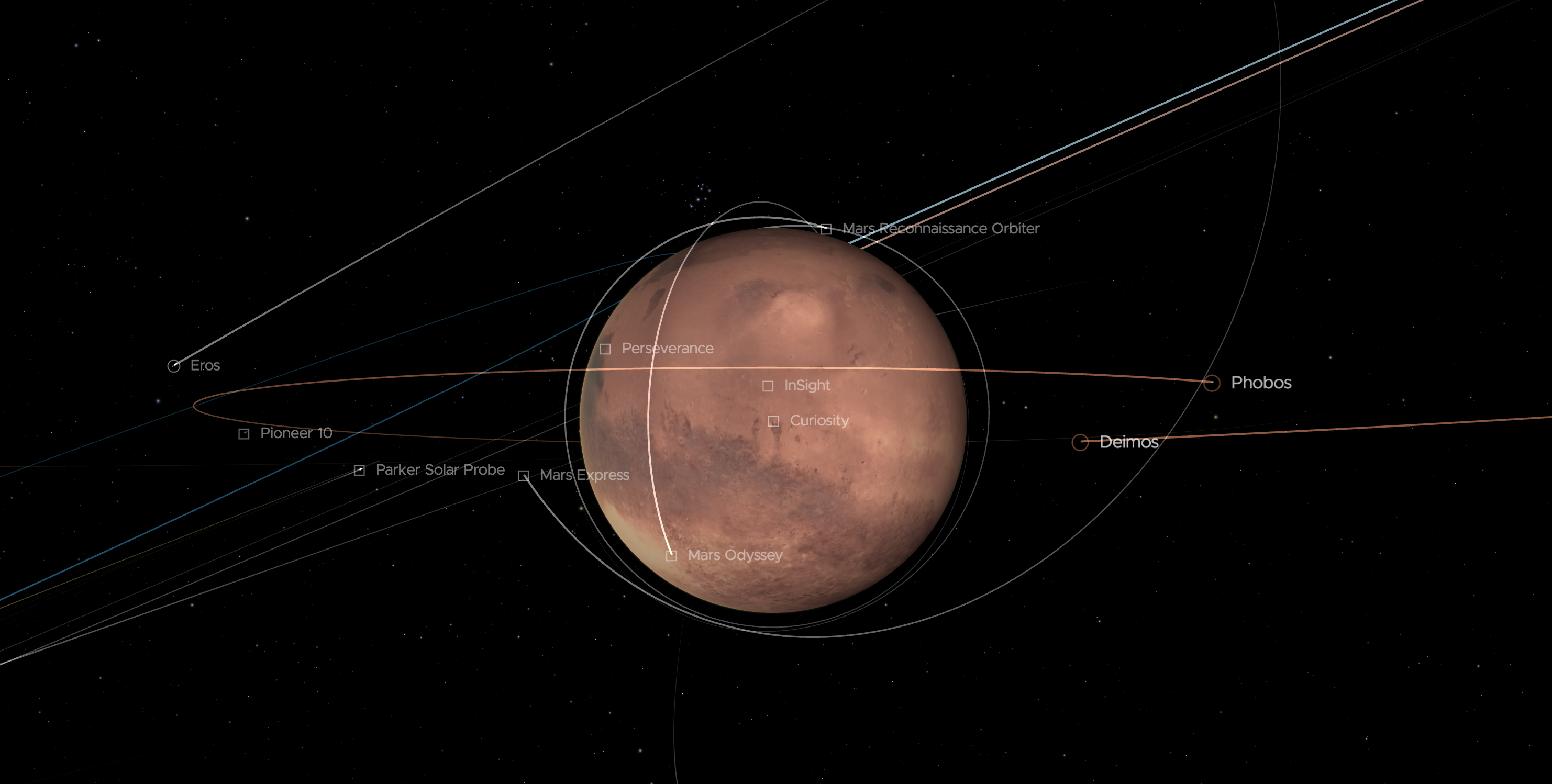Congratulations to the NASA/JPL-Caltech crew for successfully landing the Mars Science Laboratory’s Curiosity Rover on Mars! Here are the first images taken by Curiosity on the red planet..

As planned, the rover’s early engineering images are lower resolution. Larger color images are expected later in the week when the rover’s mast, carrying high-resolution cameras, is deployed.
Credit: NASA/JPL-Caltech
NASA Administrator Charles Bolden’s statement:
NASA is back on Mars – and getting ready for the next mission to the Red Planet! After an astounding 154 million mile journey and a harrowing landing that demonstrated cutting-edge technology, Curiosity, the largest rover ever sent to another planet, is in place and ready to work. This robotic laboratory will seek answers to one of humanity’s oldest questions as it investigates whether conditions have favored development of microbial life on the Red Planet. The mission is a critical planetary science mission — and a precursor to sending humans to the Red Planet in the 2030’s, a goal set forth by President Obama.
It’s another great leadership moment for our nation and a sign of the continued strength of NASA’s many programs in science, aeronautics and human spaceflight. It’s also important to remember that the $2.5 billion investment made in this project was not spent on Mars, but right here on Earth, supporting more than 7,000 jobs in at least 31 states.
With the retirement of the Shuttle program after its final flight in July 2011, some have suggested that NASA’s leadership in the exploration of space, including our extraordinary successes on Mars, was coming to an end. Nothing could be further from the truth. The Curiosity mission is only the latest in a long list of extraordinary NASA missions that established the United States as the undisputed world leader, and it will help guarantee that remains the case for many years to come.
When our Orion deep space crew vehicle takes its first test flight in 2014, it will travel farther into space than any spacecraft designed for humans has flown in the 40 years since our astronauts returned from the moon.
In 2017, NASA’s Space Launch System (SLS), a heavy-lift rocket that will provide an entirely new capability for human exploration beyond low Earth orbit, will launch Orion.
We also reached a critically important milestone in May when SpaceX became the first private company to send a spacecraft — the Dragon cargo capsule — to the International Space Station and return it with cargo intact. This successful mission ushered in a new era in spaceflight — and signaled a new way of doing business for NASA. And just a few days ago, we announced the next step in the Obama Administration’s aggressive plan to once again launch our astronauts from U.S. soil on spacecraft built by American companies.
As part of our commitment to maintain American leadership in the exploration of Mars beyond the Curiosity mission, NASA will launch the Mars Atmosphere and Volatile EvolutioN (MAVEN) orbiter next year. Earlier this year, I directed NASA’s science mission director, along with the head of human exploration, Chief Technologist, and Chief Scientist to develop a more integrated strategy to ensure that the next steps for Mars exploration will support the nation’s planetary science objectives as well as our human exploration goals. They are looking at many options, including another robotic mission to land on Mars in this decade.
I am so proud of the NASA team that has made tonight’s challenging milestone possible. However, tomorrow we begin to plan for the next great challenge — and start compiling incredible scientific data from Curiosity. For the past 50 years, NASA has specialized in doing the hard things. Thanks to the ingenuity of our teams across America and the world, we are poised for even greater success.
For more information about Curiosity and NASA’s missions to Mars, visit:
https://www.nasa.gov/mars

THE WHITE HOUSE
Office of the Press Secretary
FOR IMMEDIATE RELEASE
August 6, 2012Statement by the President on Curiosity Landing on Mars
Tonight, on the planet Mars, the United States of America made history.
The successful landing of Curiosity – the most sophisticated roving laboratory ever to land on another planet – marks an unprecedented feat of technology that will stand as a point of national pride far into the future. It proves that even the longest of odds are no match for our unique blend of ingenuity and determination.
Tonight’s success, delivered by NASA, parallels our major steps forward towards a vision for a new partnership with American companies to send American astronauts into space on American spacecraft. That partnership will save taxpayer dollars while allowing NASA to do what it has always done best – push the very boundaries of human knowledge. And tonight’s success reminds us that our preeminence – not just in space, but here on Earth – depends on continuing to invest wisely in the innovation, technology, and basic research that has always made our economy the envy of the world.
I congratulate and thank all the men and women of NASA who made this remarkable accomplishment a reality – and I eagerly await what Curiosity has yet to discover.
###

